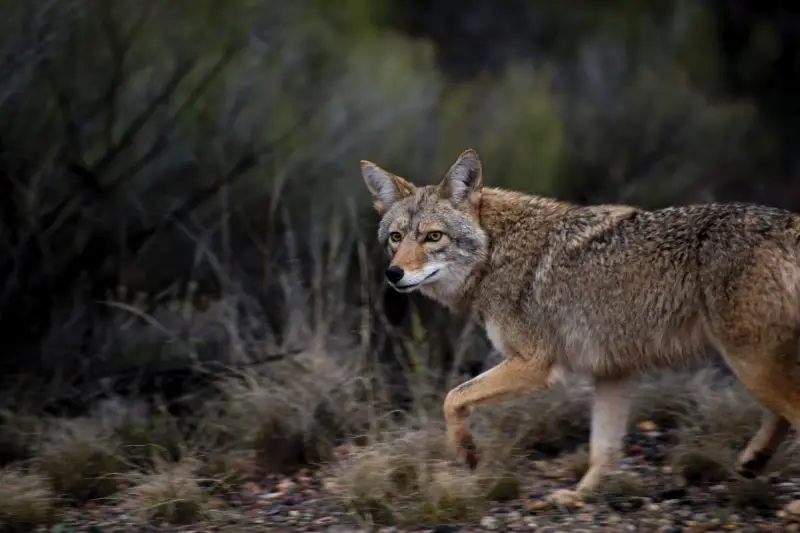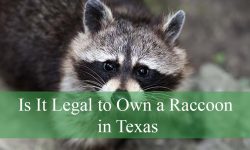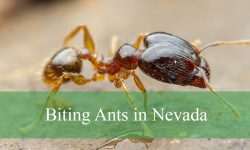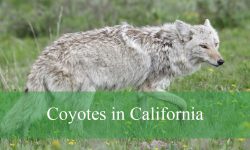When the sun dips below the mesas of New Mexico, the desert awakens to a symphony of sound — a haunting chorus of howls carried across the still night air. These are the voices of coyotes, the elusive hunters that have roamed the American Southwest for centuries. Their presence is both feared and admired, symbolizing survival, adaptability, and a touch of wild mystery.
In New Mexico’s sprawling deserts — from the Chihuahuan sands to the rugged hills near the Gila Wilderness — coyotes thrive in silence and shadow. Their nocturnal world is filled with secrets: complex social lives, silent hunting strategies, and remarkable intelligence that allows them to endure in one of the harshest environments in North America.
This article delves deep into the secret lives of coyotes under New Mexico’s desert moon. You’ll discover how they survive, communicate, hunt, and coexist with the diverse ecosystem — often in ways most people never imagine.
Understanding the Coyote: The Desert’s Ultimate Survivor

A Master of Adaptation
Coyotes (Canis latrans), often referred to as the “song dogs” of the desert, are one of the most adaptable mammals in North America. In New Mexico, they have learned to flourish across all terrains — from arid plains and sagebrush valleys to mountain slopes and even suburban edges. Their physical resilience and mental sharpness make them true survivors.
An adult coyote typically weighs between 20 and 40 pounds, with a lean build and a bushy tail tipped in black. Their fur varies from gray to reddish-tan, blending perfectly with the dusty desert tones. These traits are not mere coincidences but evolutionary advantages crafted for camouflage, agility, and endurance.
Unlike wolves, coyotes are solitary or live in small family units, making them more flexible in adapting to shifting environments. Whether it’s hunting rodents at dawn or scavenging near farmlands, their versatility ensures their continued dominance in the desert food chain.
From Ancient Spirits to Modern Myths
For centuries, Native American tribes like the Navajo and Apache have regarded the coyote as both a trickster and a teacher — a symbol of cleverness, mischief, and resilience. In New Mexico, stories of the coyote appear in ancient rock art, echoing through generations as moral lessons or cautionary tales.
In modern times, these legends merge with real-life encounters. Locals still hear coyotes howling across the mesas at night, often attributing mysterious disappearances of livestock or pets to these desert phantoms. Yet, behind the myths lies a creature not driven by malice, but by survival instincts finely tuned to desert life.
Nightlife in the Desert: When Coyotes Come Alive
Why Coyotes Are Nocturnal
The coyote’s preference for nighttime activity is not just instinct — it’s strategy. The desert’s daytime heat can reach unbearable levels, making nocturnal behavior essential for conserving energy and hydration. By emerging after sunset, coyotes take advantage of cooler temperatures and reduced competition for food.
Nighttime also provides cover. Under the soft glow of the moon, their movements are nearly invisible. Their acute night vision and heightened sense of smell allow them to track prey with incredible accuracy. In the desert night, a coyote becomes the perfect predator — unseen, silent, and unstoppable.
Their howls at night are not random; they are sophisticated forms of communication. A lone coyote may call out to locate its mate, signal territory, or coordinate group hunts. To the human ear, these calls sound eerie and haunting, but to coyotes, they are essential language — an invisible network that binds their social structure together.
Desert Nights: A World of Hidden Activity
While humans retreat indoors, the desert transforms into a stage of movement and sound. Coyotes slink through dry washes and rocky outcroppings, ears twitching at the faint rustle of mice or the flutter of quails. Their padded paws leave little trace, and their approach is nearly silent until it’s too late for their prey.
New Mexico’s nocturnal world includes many players — kangaroo rats darting across the sand, jackrabbits sprinting between sagebrush, and snakes coiling under moonlight. Coyotes are at the center of this nighttime ecosystem, balancing predator and scavenger roles with astonishing efficiency.
Each night, they travel vast distances in search of food. A single coyote can cover up to ten miles before dawn, marking its territory with scent posts and vocal calls. Their nightly routines are precise, shaped by years of inherited instinct and environmental awareness.
Hunting Strategies: Masters of Stealth and Skill
The Art of the Hunt
Coyotes are opportunistic hunters, meaning they will eat almost anything they can find or catch. In the deserts of New Mexico, their diet includes small mammals like rabbits, prairie dogs, ground squirrels, and even reptiles. During lean seasons, they switch to fruits, seeds, or carrion, showcasing extraordinary adaptability.
Their hunting style is a mix of patience and precision. Coyotes rely on keen hearing — they can detect the movement of rodents under several inches of sand. Once a sound is pinpointed, they pounce with lightning speed, digging swiftly to capture their prey.
When hunting larger animals, coyotes often work in pairs. One distracts or chases while the other circles to cut off escape routes. This cooperative strategy, while less organized than a wolf pack’s, still demonstrates remarkable intelligence and teamwork.
Adapting to Human Presence
New Mexico’s expanding towns and ranches have inevitably brought coyotes into closer contact with people. Rather than retreating, they have learned to coexist — raiding garbage cans, preying on rodents near barns, or scavenging roadkill.
This adaptability has made them controversial figures. Ranchers often view coyotes as pests, but ecologists recognize their value in maintaining ecological balance. By controlling rodent populations, they indirectly protect crops and native vegetation.
The coyote’s ability to adjust its hunting behavior around human activity — becoming more nocturnal, avoiding roads during peak hours, and exploiting artificial food sources — makes it one of the smartest predators in North America.
Social Behavior: The Complex World of Coyote Families
Pack Dynamics and Family Bonds
Contrary to popular belief, coyotes are not always solitary. In New Mexico’s deserts, family units known as “packs” often form around a mated pair and their offspring. These small groups cooperate to defend territory, raise young, and hunt.
Coyotes mate for life, and both parents take part in raising the pups. This strong bond contributes to the success of the species — teamwork ensures survival in a harsh environment where food and water are unpredictable.
Communication within the pack is rich and layered. From high-pitched yips to deep, mournful howls, each sound conveys information: warnings, invitations, or even emotional states. Observing these vocal exchanges reveals a level of social intelligence that rivals that of wolves and domestic dogs.
Raising the Next Generation
Breeding season in New Mexico typically begins in late winter. Female coyotes give birth to litters of four to seven pups in dens dug under shrubs, rocky ledges, or old burrows. For several weeks, the mother stays hidden, nurturing her young while the male provides food.
By summer, the pups begin exploring outside the den, learning essential survival skills through play. These early lessons in hunting, tracking, and social interaction prepare them for life in the wild.
As autumn arrives, some pups disperse to find new territories, while others remain with the family unit. This natural balance prevents overpopulation and maintains ecological harmony across the desert landscape.
Communication: The Language of the Desert
The Meaning Behind the Howls
Few sounds are as haunting or beautiful as a coyote’s howl echoing through New Mexico’s desert nights. Far from random noise, each vocalization serves a purpose. Howls announce territory, locate missing members, or signal readiness for hunting.
Researchers have documented dozens of unique coyote vocalizations — from soft whines and yips to intense, drawn-out howls. These sounds can carry for miles across the open desert, helping packs maintain contact even when separated by long distances.
Interestingly, coyotes often “sing” in response to sirens or other artificial noises. This behavior, sometimes mistaken for mockery, is actually a way of asserting presence — a declaration of identity and survival amid human encroachment.
Scent and Body Language
Communication among coyotes is not limited to sound. They also rely on scent marking and body posture. Urine and scat deposits signal boundaries, reproductive status, or warnings to rivals.
Body cues like tail position, ear movement, and facial expressions convey emotion and intent within the pack. A dominant coyote stands tall with raised fur and direct eye contact, while a submissive one lowers its body and avoids the gaze.
These subtle, intricate interactions reveal a species deeply attuned to its environment — where survival depends as much on communication as on cunning.
The Role of Coyotes in New Mexico’s Ecosystem
Balancing the Food Chain
Coyotes play a crucial ecological role as both predators and scavengers. By controlling populations of rodents, rabbits, and small mammals, they prevent overgrazing and protect desert vegetation. This ripple effect benefits other species, from hawks to snakes, that share the same food sources.
Their scavenging habits also help clean the environment. Coyotes consume carrion that would otherwise spread disease or attract harmful insects. In this sense, they act as natural custodians of the desert, quietly maintaining balance each night.
Without coyotes, ecosystems could easily shift out of balance. Studies in regions where coyotes were removed show explosions in rodent numbers and declines in biodiversity — proving how vital these elusive predators truly are.
Interactions with Other Predators
In New Mexico, coyotes share the landscape with bobcats, foxes, and mountain lions. While conflicts do occur, most species have developed subtle ways to coexist. Coyotes often dominate mid-sized predators but yield to larger ones like mountain lions.
Their adaptable nature allows them to adjust hunting areas or shift to new prey when competition intensifies. This flexibility minimizes conflict and preserves the delicate equilibrium of desert wildlife interactions.
Interestingly, coyotes occasionally form temporary alliances with badgers — a fascinating example of interspecies cooperation. The coyote chases prey above ground while the badger digs below, increasing the success rate for both hunters.
Threats, Challenges, and Conservation Efforts
Human Conflicts and Misconceptions
Despite their ecological importance, coyotes face significant challenges due to human misunderstanding. Many ranchers in New Mexico view them as threats to livestock, leading to widespread trapping, hunting, and poisoning campaigns.
However, studies have shown that removing coyotes often backfires — disrupting pack structures and causing increased breeding rates, which can lead to higher populations in the long run. Education and non-lethal management strategies, such as fencing and guard animals, are proving more effective and humane.
Modern conservationists are working to shift public perception. Instead of seeing coyotes as pests, they emphasize their value as keystone species vital to desert health and balance.
Adapting to a Changing Environment
Climate change poses new challenges. Rising temperatures and prolonged droughts threaten food sources and water availability. Coyotes, however, continue to adapt — altering hunting times, expanding territories, and even moving closer to urban areas in search of stability.
Their survival instincts remain unmatched. Coyotes now appear in city outskirts, golf courses, and even near Albuquerque neighborhoods, showcasing their uncanny ability to coexist with human development without losing their wild essence.
The resilience of coyotes stands as a testament to evolution’s brilliance — proving that even as the desert changes, its most cunning survivor endures.
Coyotes and People: A Complex Relationship
Cultural Significance in New Mexico
Beyond ecology, coyotes occupy a deep cultural space in New Mexico’s heritage. Native traditions see them as teachers, tricksters, and symbols of transformation. Their stories appear in art, music, and folklore, reflecting humanity’s fascination with creatures that embody both wisdom and wildness.
Today, this fascination continues. Wildlife photographers, biologists, and travelers are drawn to the challenge of observing coyotes in their natural environment. Their stealthy nature and haunting presence make them one of the most captivating subjects in desert wildlife studies.
For residents, hearing the distant howl of a coyote under the starlit sky connects them to something ancient — a reminder that the wild still breathes just beyond the edge of civilization.
Responsible Coexistence
Learning to coexist with coyotes is essential for both human and animal welfare. Simple measures like securing trash, protecting livestock with proper enclosures, and avoiding feeding wildlife can prevent conflicts.
Coyotes play a vital role in maintaining healthy ecosystems, and respecting their space ensures mutual survival. Education programs in New Mexico now promote coexistence through awareness campaigns, encouraging residents to appreciate rather than fear these desert hunters.
As more people understand their role, the relationship between coyotes and humans evolves from one of conflict to coexistence — a shift that mirrors the growing respect for nature across the American Southwest.
Conclusion: The Desert’s Shadowed Guardians
As night falls over New Mexico’s vast deserts, the howls of coyotes echo once more — wild, haunting, and eternal. These sounds remind us that nature’s mysteries are alive and thriving, often just beyond our sight.
Coyotes are not villains or myths; they are survivors, caretakers, and storytellers of the desert. Their lives intertwine with the land, shaping ecosystems and preserving balance in ways we are only beginning to understand.
The next time you hear a coyote’s call drifting across the desert night, listen closely. Within that sound lies the voice of resilience — a song as old as the desert itself.
FAQs About Coyotes in New Mexico
1. Are coyotes dangerous to humans in New Mexico?
Coyotes in New Mexico are generally not dangerous to humans. They are naturally shy and tend to avoid contact with people whenever possible. Most coyote encounters occur when they are searching for food near human settlements, often drawn by unsecured garbage, outdoor pet food, or small pets. While attacks on humans are extremely rare, it’s important to never feed coyotes or encourage their approach. Maintaining a respectful distance ensures safety for both people and wildlife.
2. What do coyotes eat in the New Mexico desert?
Coyotes in New Mexico are opportunistic omnivores, meaning they eat a wide variety of foods depending on what’s available. Their diet primarily includes small mammals like rabbits, rodents, and prairie dogs. They also consume birds, insects, reptiles, fruits, and carrion. In agricultural or suburban areas, they may scavenge leftovers or raid trash bins. This flexible diet is one of the key reasons coyotes thrive across New Mexico’s harsh desert environments.
3. When are coyotes most active in New Mexico?
Coyotes are most active at night, particularly during dawn and dusk hours — a behavior known as crepuscular activity. The cooler nighttime temperatures of New Mexico’s deserts allow them to conserve energy and avoid daytime heat. During these hours, they hunt, communicate through howls, and patrol their territories. However, in cooler months or remote areas, coyotes may also be spotted during the day.
4. How can I keep coyotes away from my property?
To deter coyotes, eliminate food sources that attract them. Secure trash cans with tight-fitting lids, keep pet food indoors, and clean up fallen fruit around your yard. If you own livestock or pets, use fencing that’s at least six feet tall and buried several inches underground to prevent digging. Motion-activated lights or sprinklers can also help. Avoid feeding wildlife, as this encourages dependency and can increase the risk of conflicts.
5. Why do coyotes howl at night?
Coyotes howl to communicate, not necessarily out of aggression or loneliness. Their vocalizations serve multiple purposes: to mark territory, locate pack members, or warn rivals. During breeding season or after successful hunts, howling often intensifies. The open desert landscapes of New Mexico amplify their calls, making them sound eerie and widespread. In reality, a small group of coyotes can sound like a much larger pack due to their unique, overlapping vocal tones.
6. Are coyotes protected in New Mexico?
Coyotes are not classified as endangered or protected under federal law. In New Mexico, they are considered non-game animals, meaning they can be hunted or trapped year-round with few restrictions. However, wildlife experts and conservationists encourage ethical coexistence and non-lethal control methods whenever possible. Coyotes play an essential role in maintaining healthy ecosystems by controlling rodent and pest populations.
7. Can you hear coyotes every night in New Mexico?
In many rural and desert areas of New Mexico, hearing coyotes at night is common — especially during winter and early spring. Their howling tends to peak during mating season or after significant temperature drops. In more urban areas, you may hear them less frequently, but they are still present, often roaming along the outskirts where wilderness meets development.






